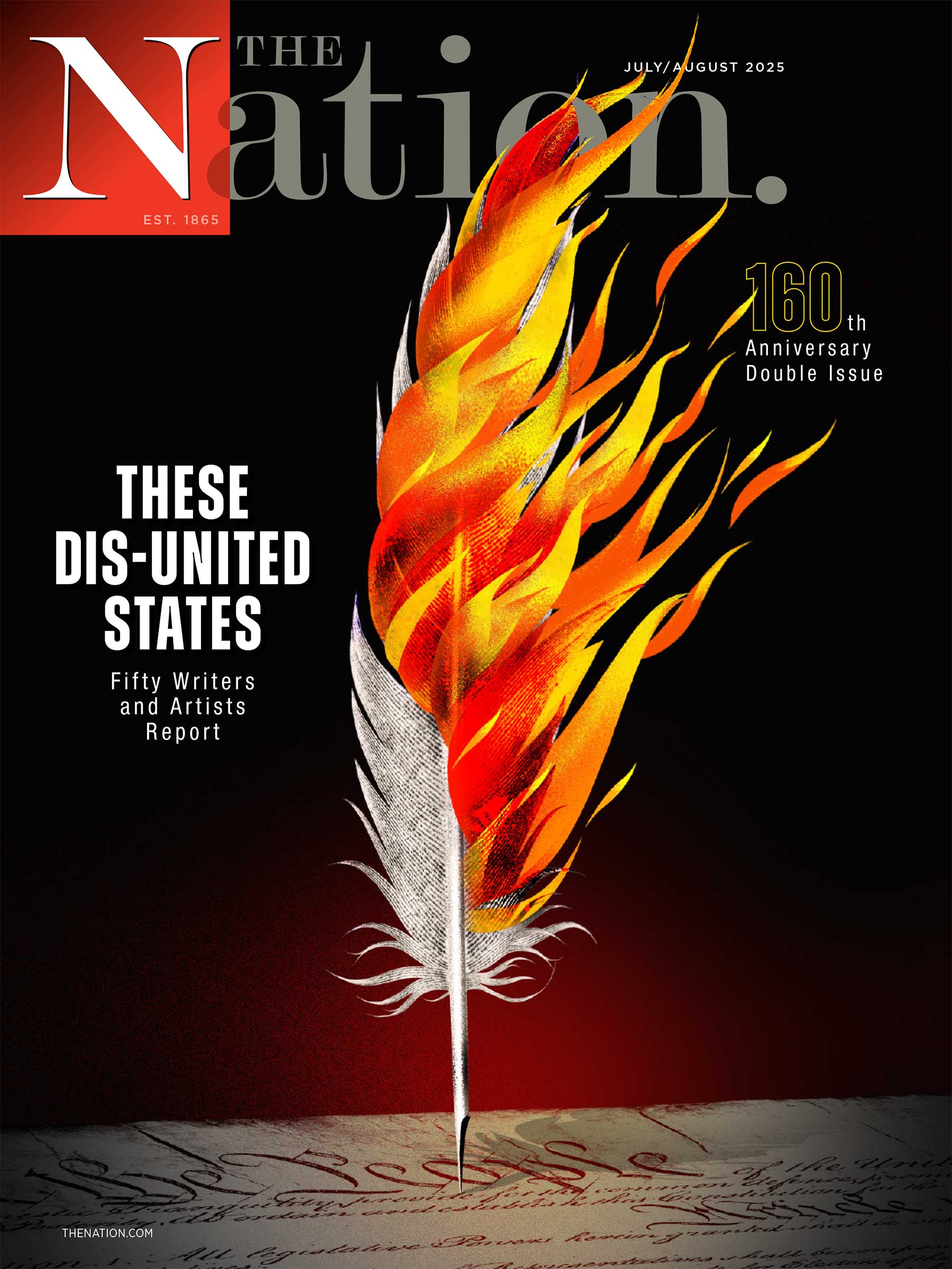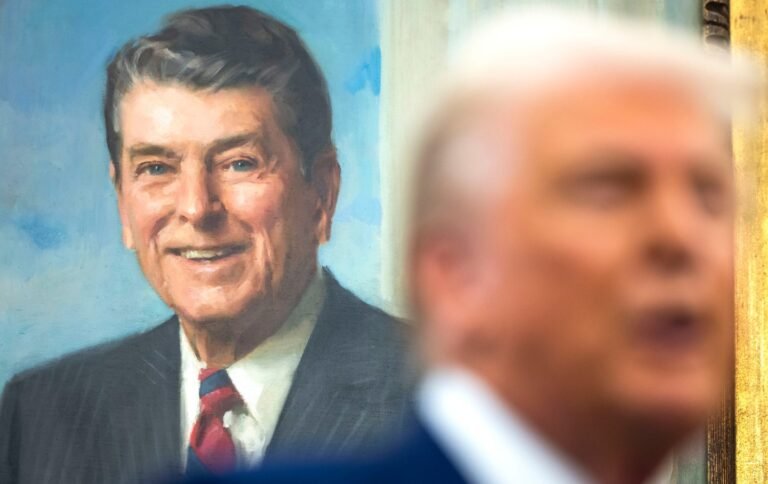Politics
/
August 7, 2025
In contrast with the now sober-seeming Reaganites, Trump has taken credit for the economy from day one.
In the winter and spring of 1981, Ronald Reagan took office and pushed through a massive tax cut, domestic spending cuts and military spending increases—a supply-side revolution, while Federal Reserve Chair Paul Volcker jacked up interest rates. By summer, the economy was heading toward recession, and my boss, chairman Henry Reuss of the Joint Economic Committee, began demanding to know whether the new administration took responsibility. “Oh no!” they replied, “Our program hasn’t taken effect!”
The parallels with 2025 are more apparent than real. The CBO projects that Trump’s tax cut will add $4.1 trillion to the national debt—but that’s only based on the absurd premise that the 2017 tax cuts would otherwise expire. In reality, the tax bill was a relatively small change to the status quo. Spending cuts are a serious blow to Medicaid and SNAP, but small in relation to the economy. Likewise military increases. Deregulation is more serious, but the effects—for instance, on the environment—will take time to show up. Interest rates are high, but 5 percent isn’t 20.
And there are tariffs. Reagan’s administration was free trade in principle, protectionist when convenient. Trump’s is highly protectionist in principle, but open to pressure from the real world, which is why final diktats on China and on Mexico keep being delayed. His tariffs will permit some American producers to raise prices and profits (good for jobs, bad for consumers) except where they disrupt critical supply chains. That these are now ubiquitous—think gallium, germanium, rare-earth magnets—is something Trump’s people and the Pentagon are finding out.
In contrast with the now sober-seeming Reaganites, Trump has taken credit for the economy from day one. This is in line with his general worldview, but also with the trend toward magical thinking in economics since the 1980s. The hyperpersonalization of economic policy (Clintonomics, Bidenomics) has deepened greatly since then, imbuing each president with mysterious powers rooted in the force of personality and supposedly distinctive ideas. But it is a two-edged sword, as Trump discovered when the Bureau of Labor Statistics (BLS) abruptly revised three months of job growth downward. Trump reacted by firing the messenger, something that never happened under Reagan because we at the Joint Economic Committee defended the BLS, holding hearings on unemployment every month.
Reagan’s people knew (and told me!) that they expected Volcker to engineer a deep recession. Monetarists favored this; supply-siders were opposed; Reagan’s chief economist, Murray Weidenbaum, made private jokes about the clash. Similar splits bedevil the Trump team—did Scott Bessent (bless his heart) really take a swing at Elon Musk?—and some of Trump’s tariff people are as loopy as the supply-siders. The element of good humor appears absent, as also the underlying grim realism. Trump appears to need good news all the time, but not to enjoy it; Roosevelt and Reagan he is not.
Then there is the interest rate, then as now a critical question. With public debt greater than GDP, high interest rates flood cash-holders with money, while locking up the housing market and concentrating stock capitalization on the most speculative (and potentially unstable) firms. Trump is right (so help me) that interest rates should come down. But his public demands and threats back Fed chair Jerome Powell into a corner: Powell can’t comply without appearing to cede “independence.” Only Congress can order the Fed to change course, and so far, Congress is on the sidelines, with the Democrats on the wrong side of the issue. Here the contrast with 1982 is sharp: That year, Congress did agitate for lower interest rates and eventually got them. (The May 18, 1982, Federal Open Market Committee minutes document discussion of a six-page Reuss-to-Volcker letter; modesty precludes my mentioning who drafted it.)
Current Issue

Finally, there is foreign policy—a critical predicate for the success or failure of economic policy, since without life on Earth, economies do poorly. In this matter, Reagan (in his second term) really did redeem himself—in my eyes—by reaching out to the leadership of the Soviet Union and ending the Cold War. Trump has a similar ambition—but so far, the results are not impressive. The clock is ticking on that, with the Democrats again on the wrong side of the issue, and one can only hope for the best.
Well, as Marx famously noted in The Eighteenth Brumaire of Louis Bonaparte, Hegel remarked somewhere that great personalities reappear, but “he forgot to add, on the first occasion as tragedy; on the second as farce.” Reagan’s revolution was the bright dawn of a mystical age, the beginning of rule by neoliberal economists. Trump’s seems more a desperate foray through the rubble.
Eventually, by the way, Reagan’s people agreed to take credit for the economy as of the new fiscal year, October 1, 1982. On that day, at my urging, Reuss read a poem by Archibald MacLeish into the Congressional Record. It is called “The End of the World”:
Quite unexpectedly, as Vasserot
The armless ambidextrian was lighting
A match between his great and second toe,
And Ralph the lion was engaged in biting
The neck of Madame Sossman while the drum
Pointed, and Teeny was about to cough
In waltz-time swinging Jocko by the thumb
Quite unexpectedly to top blew off:And there, there overhead, there, there hung over
Those thousands of white faces, those dazed eyes,
There in the starless dark, the poise, the hover,
There with vast wings across the cancelled skies,
There in the sudden blackness the black pall
Of nothing, nothing, nothing—nothing at all.
MacLeish, then near the end of his life, saw it and sent a letter; he was delighted.




